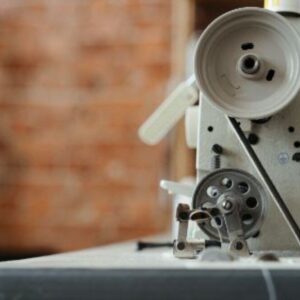Can Make Your Home Look Brand New
Brisbane Painter the walls in your home is one of those easy-to-do projects that you can do yourself. To achieve a professional finish, you will need to plan carefully and use the right tools.
In the 19th century thematic wall painting was revived by painters of art nouveau and national romantic styles. The new paintings referred to the past and used rhythmic colors.
Preparation
Painting your own home’s walls might seem like a daunting task, but with some careful preparation and practice, it is not as difficult as you might think. Professional Painters Melbourne have developed a number of tricks and procedures over the years to make your paint job look better, go faster, and finish cleaner. Here are a few tips to help you get started on your next project:
Before applying any primer or paint, it is a good idea to gently sand the surface of the wall with 80-grit sandpaper to give it a rougher texture that will help the paint adhere to the wall. Sand the entire wall and pay particular attention to areas with noticeable bumps or that are otherwise uneven. Once you are finished sanding, be sure to vacuum the dust off the walls from ceiling to floor to eliminate any dust particles that could interfere with the smooth application of the paint.
Prime the walls after they have been sanded, cleaned and buffed. This step can be as simple as putting some primer on a brush and lightly covering the entire wall with it, or it may be more involved. If you are painting an older house that has been painted several times, you might need to apply a few coats before you begin the actual painting.
During the priming process, it is also a good idea to check for any cracks or chips in the walls that might need to be filled. You can do this with a filling blade and the appropriate Polyfilla surface filler. It is important that all gaps are sealed well when filling to prevent water and other substances from seeping in the walls causing rotting.
Finally, it is a good idea to choose the right paint for your project. This is a personal decision that will depend on your needs, style preferences and the overall appearance of the room. For example, if you are working in a living room, a more durable, high-quality paint may be necessary, as it will be subjected to frequent wear and tear. If you’re unsure what type of paint you should use, ask a paint expert in your local home improvement shop.
Painting
Professional painters don’t cut corners on materials. They know that a little extra cost is well worth the improvement in quality that comes with using the best tools. This includes brushes, rollers, and painter’s tape. Moreover, they use quality paint and stains. This can make the difference between a job well done and a job that is excellent.
Before painting, a wall-painting professional should clean the walls of dust and dirt. This is important as dust can cause the paint to flake and create an uneven surface. Some professionals use a drywall polesander or a brush to smooth out any bumps or dent in the wall. They might also use spackling paste or plaster of Paris to fill small holes in the wall.
Then, using a roller or brush, apply a thin layer of primer. This will make the paint adhere better to the wall and cover it more evenly. Then, they can begin painting. Some pros suggest working in sections to save time and reduce the risk of visible roller marks. For example, they might start with a three-by-three foot W pattern and work back across it without lifting the roller until the section is fully covered.
After the walls have been painted, painters should clean their tools and paint containers. Painters should also check the color again in different lighting conditions, as the light can affect the appearance of the paint. Depending on the paint type, they can rinse their brushes with water or soap. This step is especially important for water-based paints, which can be difficult to clean if they aren’t rinsed thoroughly.
Another thing that a painter must do is move any furniture in the room they are painting. This helps them avoid stumbling over it and can prevent the furniture from getting dirty from the wet paint. They should also remove any clocks, pictures, or mirrors from the wall and place them somewhere safe until they are replaced. In addition, they should try to keep pets away from the painting area, as they could get in the way or be scratched by the brushes.
Finishing
It is easy to paint the walls of your home and make it look like a brand new house. Not only is it affordable, but you’ll also get a high-quality result that you can be proud of. Using the correct tools and techniques will ensure a professional finish. You will save money because you won’t need to hire a professional painter.
You need to be patient, and follow some simple rules in order to get the best results. Start by priming the walls and ceilings with a suitable primer before painting. You can then proceed to applying the actual paint. Avoid drips by using a roller for large areas. Use a brush to cover any small areas or details. Wipe up any paint drippings or spills as soon as possible. This will prevent them from drying out and hardening onto your walls.
Allow the primer to completely dry before moving on to the next stage of your project. If you do not, the primer will bleed into the actual paint and create an uneven appearance. Finally, use a damp cloth to wipe the wall clean of any dust or grease. Using a cleaner that is specifically designed to remove grease can be helpful as it will prevent the new paint from adhering to the wall.
It is important to allow your paint to dry completely before you touch it. You can also rinse your brushes and rolling pins with warm soapy water. Most paints are water-based and they will clean up easily with a little soap. If you have any leftover paint, re-cap the can and store it in a cool, dry place.
In the USSR, wall painting reached its peak in the 1920’s and 1930’s with the building of majestic public buildings and memorial complexes. Ch. Akhmarov, L. A. Bruni, A. A. Deineka and P. D. Korin. The Soviet Union also saw the development of monumental works in other socialist countries such as Hungary, and Bulgaria.
Cleaning
It is important to clean the walls before painting. Wall dirt can cause the paint to flake or chip. This can be done with a duster or a sponge, and it is especially important to deal with tough stains right away. If the stain is not dealt with immediately, it may become ingrained and more difficult to remove.
For most stains, a little bit of soap and water is sufficient. However, if the stain is particularly stubborn, it may be necessary to use other cleaners. Combining a mild cleaner with tepid lukewarm water is the best option. Apply the solution on a sponge, and scrub the wall. Pay special attention to any crayon or grease marks. Once the walls are cleaned, they should be rinsed and allowed to dry completely before proceeding with any painting.
Professional painters understand that it is important to thoroughly clean walls before applying primer or paint. This means washing the walls using special wall cleaners or mild detergents, wiping them down with a cloth, and vacuuming away any stubborn stains. They also know it’s best to do this in an airy room.
Before beginning to clean the walls, it is a good idea to lay down some lint-free towels along the floor to catch any spills or drips from the cleaning solutions. Open windows and turn fans on to help clean the air.
In some cases, scrubbing off the stains and dusting them can be sufficient to prepare them for painting. If the walls are extremely dirty, you should use stronger cleaners. If the walls in the kitchen are covered in grease, or if the children’s rooms have crayon marks on them, you may need to use trisodium chloride (TSP) – or something similar. TSP is a very strong chemical, so wearing rubber gloves and safety glasses is recommended when using it.
A thorough cleaning of the walls is an integral part of a successful painting job. It will help the paint to adhere and last longer. You can make sure that your next painting job is a success by following the tips listed above.


